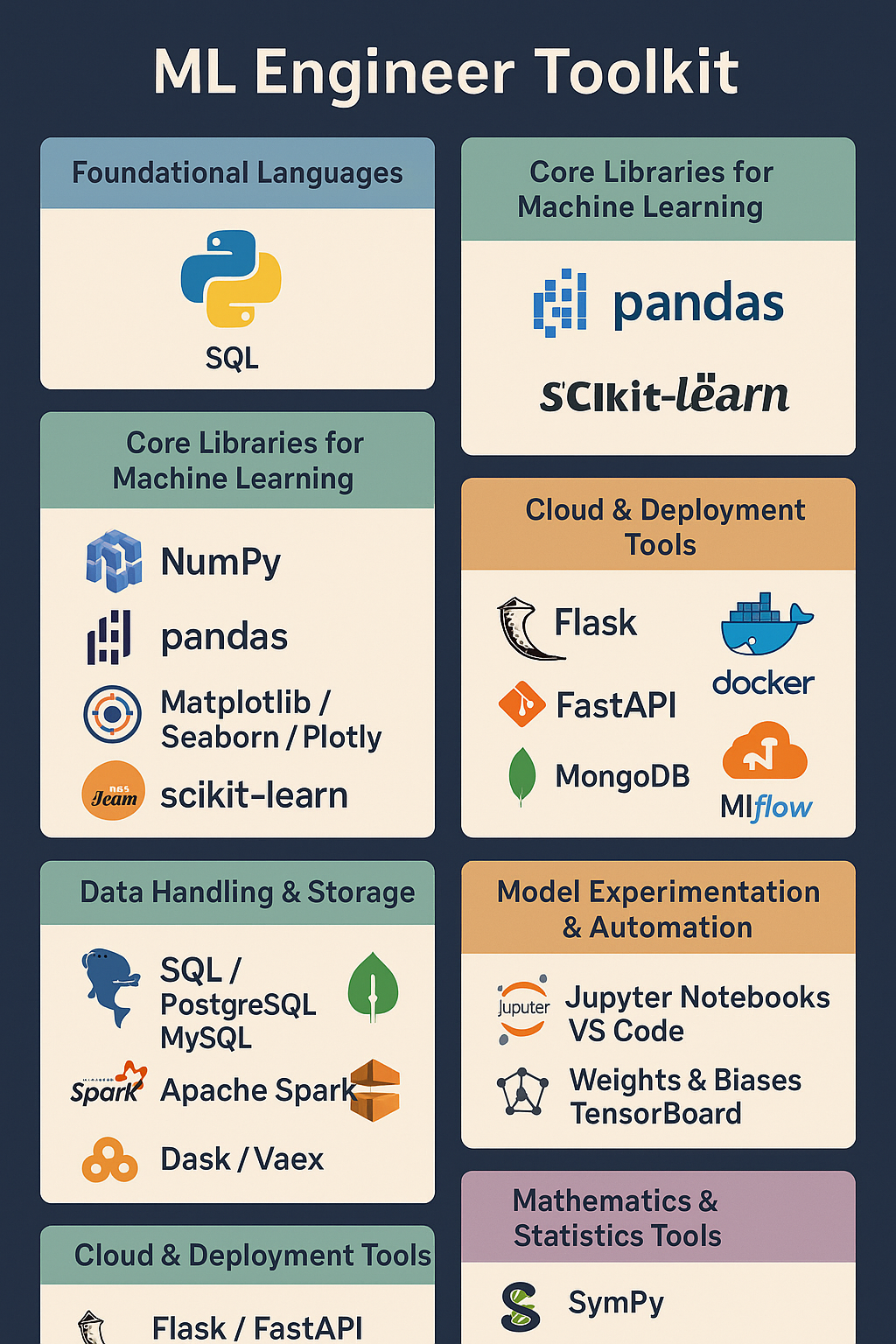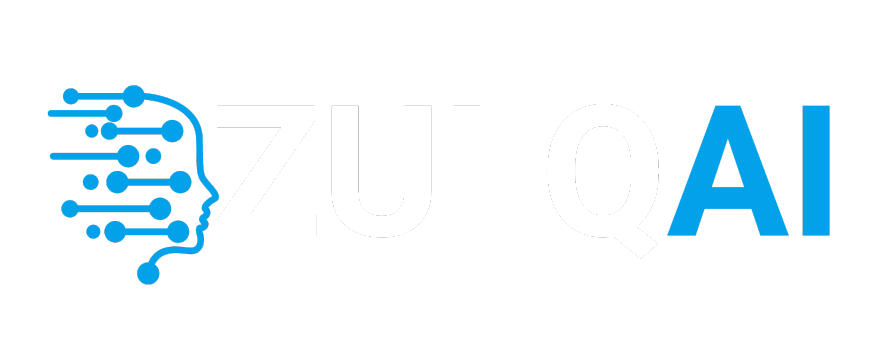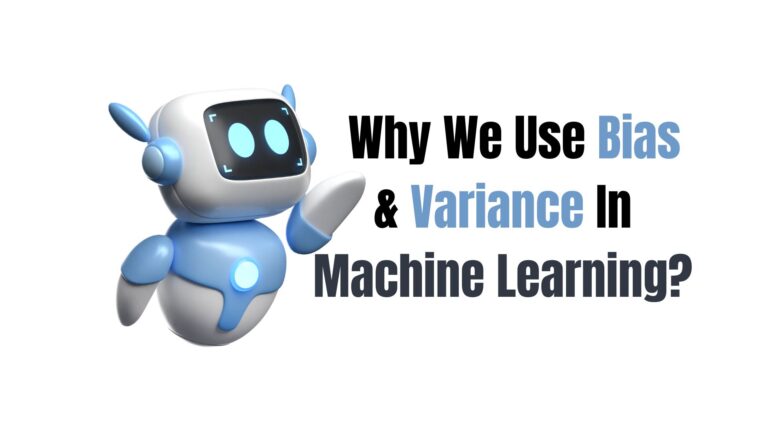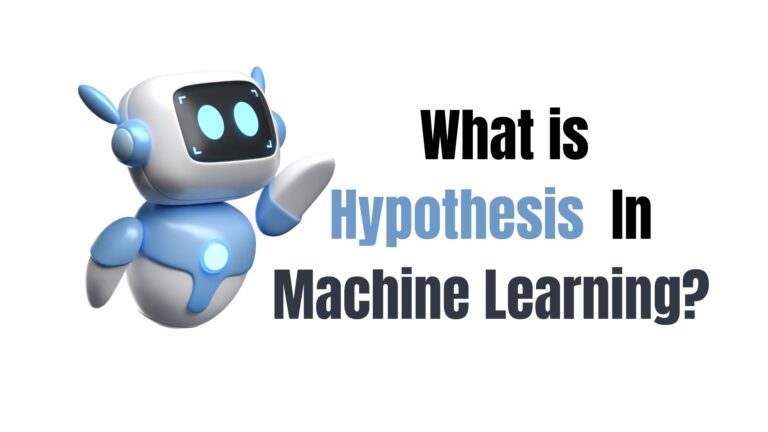Essential Languages, Libraries, and Tools Every Machine Learning Engineer Should Master

As an aspiring Machine Learning Engineer, your toolkit should evolve like a warrior’s arsenal — sharp, diverse, and ready for any battle in data, modeling, or deployment.
Here’s a curated breakdown of languages, libraries, tools, and platforms that every ML engineer should aim to master — structured into stages so you can track your growth:
🧱 Foundational Languages
These are your primary weapons:
- Python – 🧠 Core language for ML, data analysis, deep learning.
- SQL – 🔍 Essential for data querying from databases.
- (Optional) C++ or Java – ⚙️ Useful for performance-heavy applications, embedded systems, or production environments.
- (Optional) R – 📊 Good for statistical modeling and academia.
📚 Core Libraries for Machine Learning
These do the actual learning:
- NumPy – Math with arrays and matrices.
- pandas – Data wrangling, cleaning, and manipulation.
- Matplotlib / Seaborn / Plotly – Data visualization.
- scikit-learn – Classical ML (regression, classification, clustering, etc.)
- XGBoost / LightGBM – Fast and powerful boosting algorithms.
🧠 Deep Learning Frameworks
For neural networks and large models:
- TensorFlow (with Keras) – Production-ready deep learning.
- PyTorch – Flexible and Pythonic deep learning.
- (Optional) Hugging Face Transformers – Pretrained models for NLP.
- (Optional) OpenCV – Computer Vision tasks.
🔍 Data Handling & Storage
Manage large datasets smoothly:
- SQL / PostgreSQL / MySQL – For structured data.
- MongoDB – NoSQL for flexible document storage.
- Apache Spark – Big data processing.
- Dask / Vaex – Handle large dataframes on single machines.
☁️ Cloud & Deployment Tools
Take your models to the world:
- Flask / FastAPI – For building model APIs.
- Docker – Containerize and ship your ML models.
- Git & GitHub – Version control and collaboration.
- AWS / GCP / Azure – Deploy models at scale.
- MLflow – Model tracking and lifecycle management.
🛠️ Model Experimentation & Automation
Boost productivity and reliability:
- Jupyter Notebooks / VS Code – Interactive coding.
- Weights & Biases / TensorBoard – Experiment tracking and visualizations.
- Airflow / Prefect – Automate ML pipelines (data → model → deploy).
📊 Mathematics & Statistics Tools
Understand the why behind the models:
- SymPy – For symbolic math.
- Matplotlib / LaTeX / Desmos – For expressing math and visualizations.
- Excel / Google Sheets – Quick stats exploration, especially for EDA.
🧪 Bonus: Tools for Specialization
Pick based on your interest (NLP, CV, RL, etc.):
- NLP: spaCy, NLTK, HuggingFace
- Computer Vision: OpenCV, Detectron2, YOLO
- Reinforcement Learning: Gym, Stable-Baselines3, Unity ML-Agents
- Time Series: Prophet, tslearn, ARIMA libraries






